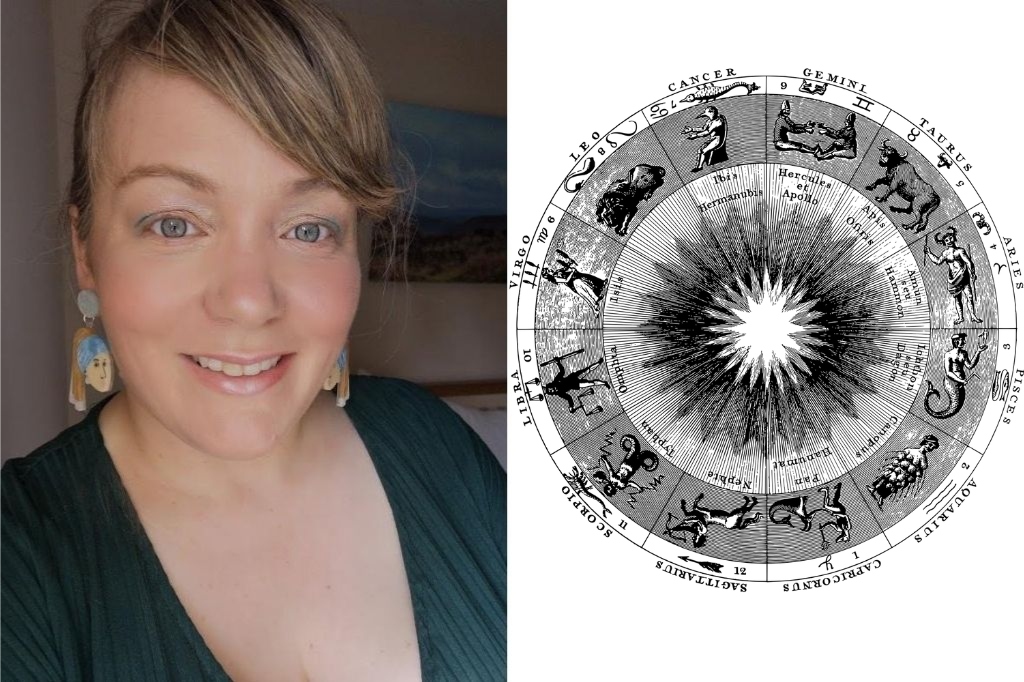Stars, solar systems and seeking answers. Today’s horoscope is…courtesy of UON’s Senior Lecturer in History
Date 31.10.2024
31.10.2024
Astrology – the study of how the positions of stars and planets are believed to affect human lives – has long been the topic of scrutiny. However with its significant presence throughout history, one academic at the University of Northampton argues the importance of astrological horoscopes can help historians understand how medieval people made sense of the world around them.
To mark All Hallows’ Eve, or Halloween, the University of Northampton’s Senior Lecturer in History, Dr Rachel Moss explores the history of horoscopes and their importance in the lives of the everyday medieval person in the following blog:
As a teenager in the late 1990s, I remember the interior design trend for rich blue fabrics emblazoned with suns, moons and stars. My generation had a marked interest in the witchy and arcane, which saw girls my age wearing crushed velvet and avidly reading their horoscopes. 90s fashion is back this season, and TikTok trends suggest that astrology is – after a dip in interest in the 2010s – once again in vogue.
There is nothing new, of course, about astrology. These days most people take their horoscopes with a pinch of salt, but in the Middle Ages they were viewed very seriously, influencing medical treatment, political decisions and more.
Today’s astronomers would probably be offended if they were asked about star signs instead of questions on solar systems. But in the Middle Ages, astrology was a strand of astronomy and was a reputable area of study. Comets, eclipses and planetary conjunctions were thought to foretell natural disasters or other world-shaking events. For instance, the Paris Medical Faculty in 1348 attributed the pandemic we now call the Black Death to a significant astrological event:
“We say that the distant and first cause of this pestilence was and is the configuration of the heavens. In 1345, at one hour after noon on 20 March, there was a major conjunction of three planets in Aquarius.”
As well as causing events of national or global significance, the stars were also believed the influence individuals’ health and personality. Medieval people knew about five planets in our solar system – Mercury, Venus, Mars, Jupiter and Saturn – which in an age without much light pollution could often be seen with the naked eye.
Medieval doctors thought that these five planets, along with the sun and moon, governed different parts of the body. For example, Jupiter governed the liver. Accordingly, the most efficacious treatments of disorders required careful consultation of the stars. Plants and herbs for medicines were best gathered when the planets that influenced their usage were visible, and horoscopes could be consulted to determine the best days and times for treatment to commence. They also believed that the star sign under which a person was born would make them more susceptible to particular illnesses. For instance, a Leo like me might be more prone to diseases affecting the torso, including the heart and spine.
Astrology was so important that most medieval royal courts had an in-house astrologer. For those without access to a king’s resources, they could consult popular astrological calendars that gave advice on decision-making for when the sun was in each of the signs of the zodiac. In late October the sun is in Scorpio, which in medieval terms was a star sign fraught with the potential for disaster. One Dutch manuscript, for example, warns that it is a month of conflict, and advises against moving house, starting journeys or even bathing in this period! Fortunately, Sagittarius which follows Scorpio is a month of peace-making and is an auspicious time to get married (and, one hopes, to catch up on an overdue bath).
While it can be tempting to laugh at medieval beliefs, understanding them helps make sense of the way medieval society worked. In my first-year module The Medieval World 1200 – 1500, I introduce students to the study of medieval astrology alongside a range of other beliefs about the supernatural and occult. This helps them understand the values that shaped medieval society and gives them insight into how medieval people made sense of the world around them.
Recently I asked students to have a go at writing their own version of some medieval horoscopes, which you can see here. This is a good example of a creative way to get students engaged with historical practices and to imagine what it would be like to live in the Middle Ages. So next time you flick through a magazine and see the horoscope page, perhaps pause for a moment and think about how you might have read that advice if you had lived a few hundred years ago. It may not make you a believer in the power of the stars, but it will perhaps give you some insight into our cultural heritage.
Happy Halloween!